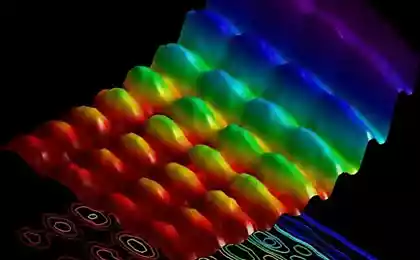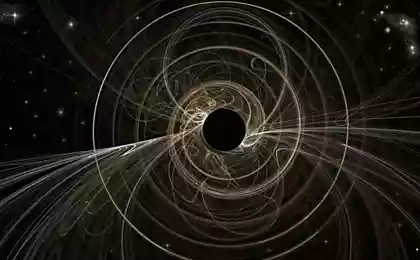431
Physicists are trying to explain the strange particle collisions at the LHC

Anomaly discovered at the Large hadron Collider has prompted scientists to reconsider a mathematical description of related experiments. Studying the two forces that are different in everyday life, but are combined under extreme conditions in the Collider (which resembles conditions after the Universe's birth), they have simplified one description of the interactions of elementary particles. The new approach allows us to make specific predictions of events future LHC experiments and other colliders, which will help to reveal "new physics" particles or processes that have yet to open.
The point is that composite subatomic structures created in a massive collision of protons, collapsed unexpectedly in the detector of the Large hadron Collider called LHCb. "b" in the title of the detector means beauty (pretty) and indicates the type of quarks one of the fundamental building blocks of matter. Pairs of quarks, a beauty quark plus one — any of them — form a lovely Maison.
The particle is unstable, fleeting structures that quickly disintegrate into elementary particles. One type of decay produces an electron and a positron, the other a muon and its anti-matter counterpart, antimuon.
The standard model of particle physics, a powerful mathematical model that has led physicists to the discovery of the Higgs boson and other particles before it, predicts two possible decay has to occur at the same speed.
But experiments using the LHCb detector have shown that the muon-electron decay 25% slower. Such anomalies point to "new physics", the details of the fundamental forces of nature that need to be worked out.
Benjamin Grinstein, Professor of physics, University of California at San Diego, and his colleagues Rodrigo Alonso de Pablo and Jorge Martin Camalich revised mathematics underlying the forecast. Their work was published in the journal Physical Review Letters.
The standard model describes particles and their interactions, forming the fundamental forces of nature, including electromagnetism and the weak force responsible for radioactive decay. Under normal conditions, the weak force electromagnetism seem different, but in extreme conditions, e.g. high energy Collider, or the extreme conditions of space after the Big Bang, they are believed to be merged in the electroweak interaction.
"We noticed that the parameters people use to experiment with low-mass particles like mesons do not include the limitations associated with this Supplement — modifications to the Standard model, which take into account additional interactions, said Greenstein. — When you do, you'll find a surprising number of restrictions. It was assumed that at low energies you can forget about all the limitations of the electroweak theory, because they can not see, but in reality it is not so."
When the two forces are seen as one, some mathematical terms, which describes the interactions, parameters are not allowed and may be discarded. To such conclusion the group of Greenstein. Other — related and can be collapsed into a single parameters, which greatly reduces the number of parameters required for the model calculation.
"Usually, a closer look leads to more detailed or complex models. A pleasant moment in our project is that our assumptions greatly simplify the study of the physics of decay," writes Alonso. Scientists have been able to squeeze new physics to explain the anomalies. Description of scientists is consistent with the mathematics of the Standard model. This Supplement, which considers small deviations in the expected behavior of particles with low mass in the process of disintegration lovely, strange and charmed meson. A simplified mathematical description allows us to make specific predictions of what should observe physics experimenters. For example, limit the spin of elementary particles produced in the course of specific interactions.
These events are quite rare: the LHC produces billions of collisions, but only one in 100 million beautiful mesons decays this way. In fact, this anomaly was considered by the group Greenstein.
Quantum field theory States that the forces, or interactions result from the exchange of particles.
"This parameterisation ignores the exchange of particles," says Greenstein. But this is a potential guide in the search for new elementary particles. Once this exchange is well described, you can return and wonder what type of particle must act as a mediator with very specific requirements."
If additional particles exist, they remain unnoticed until now, perhaps because they are so massive that the LHC has not yet reached the energy necessary for their production.
Cosmology points to as yet undiscovered physics, dark matter consists of as yet unknown substance, dark energy accelerates the expansion of the universe by an unknown force. These puzzles can be solved if they found a new particle.
Source: hi-news.ru
December 19, SpaceX for the first time in history put a rocket on floating platform
The father of the world wide web — the Network should be the inalienable right of every person






















